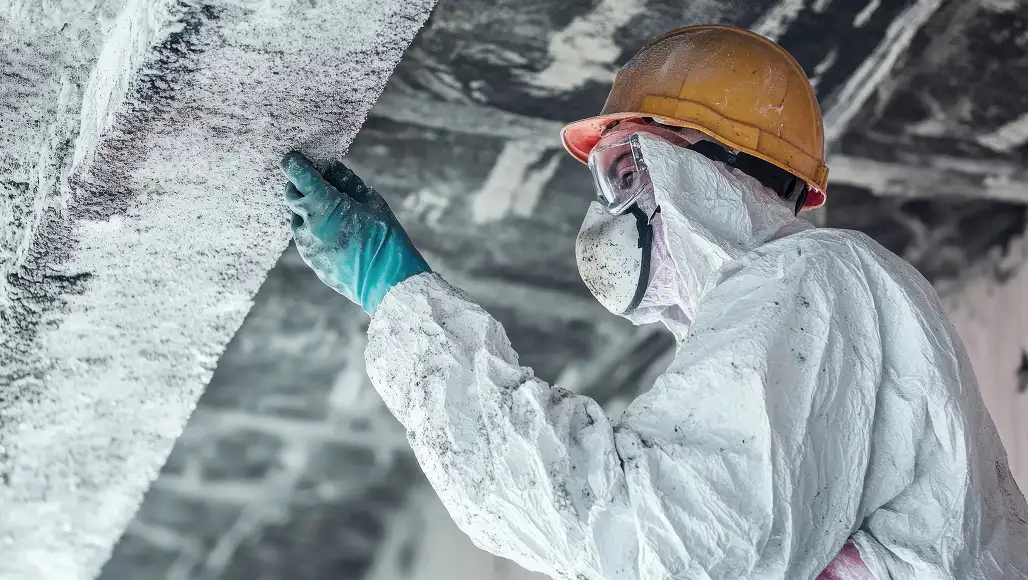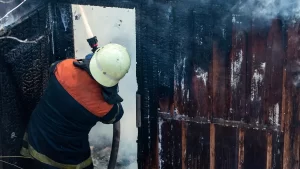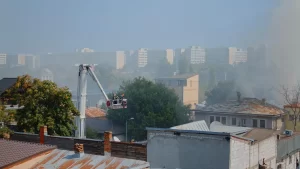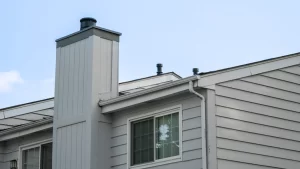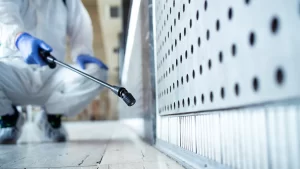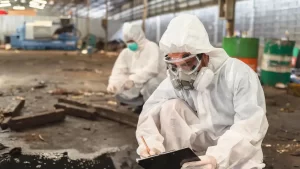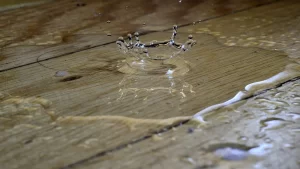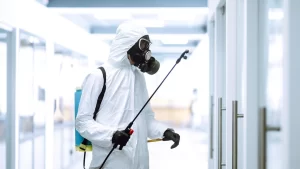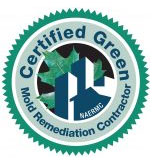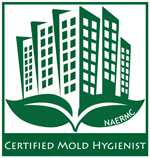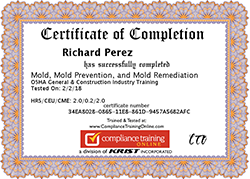Asbestos is a naturally occurring mineral that was widely used in building materials due to its durability and fire-resistant properties. However, it has since been discovered that asbestos fibers can pose serious health risks when inhaled, making their removal a critical step in maintaining a safe home environment. Proper asbestos removal helps prevent exposure to these harmful fibers, protecting the health of everyone in the household.
For homeowners, understanding insurance coverage related to asbestos removal is essential because the process can be costly and complicated. Knowing what aspects of asbestos removal are covered by insurance policies can help homeowners avoid unexpected expenses and navigate claims more effectively. Being informed about insurance coverage ensures that homeowners can take the necessary steps to safely remove asbestos without undue financial burden. Call California Certified to get expert guidance and professional asbestos removal services you can trust.
What Is Asbestos Removal?
Asbestos removal refers to the professional process of identifying, containing, and safely eliminating asbestos materials from a building. Because asbestos fibers are hazardous when disturbed and inhaled, removal must be handled carefully by trained specialists using specialized equipment and safety protocols. The goal is to prevent asbestos fibers from becoming airborne and posing health risks to occupants and workers.
Asbestos removal is necessary for several important reasons:
- Health protection: Asbestos exposure is linked to serious illnesses such as lung cancer, mesothelioma, and asbestosis. Removing asbestos reduces the risk of these diseases.
- Regulatory compliance: Many regions have strict laws requiring asbestos to be safely removed or managed before renovations, demolitions, or property sales.
- Property safety and value: Removing asbestos helps ensure the building is safe for current and future occupants and can prevent legal or financial issues down the line.
- Peace of mind: Knowing that asbestos has been professionally removed allows homeowners and occupants to feel secure about their indoor environment.
Health Risks Associated with Asbestos Exposure
Asbestos exposure occurs when tiny fibers are released into the air and inhaled, where they can become lodged in the lungs. Over time, these fibers can cause scarring, inflammation, and severe respiratory conditions. The danger lies in the fact that asbestos-related illnesses often take years or even decades to develop, meaning individuals may not realize the harm until it is too late.
The most serious health risks linked to asbestos exposure include:
- Mesothelioma A rare and aggressive cancer affecting the lining of the lungs, chest, or abdomen.
- Lung cancer: A major risk for individuals with prolonged asbestos exposure, especially smokers.
- Asbestosis: A chronic lung condition caused by scarring of lung tissue, leading to breathing difficulties.
- Other respiratory issues: Including pleural plaques, fluid buildup, and decreased lung function.
Because of these dangers, asbestos removal should only be carried out by licensed professionals. They have the training, equipment, and safety measures necessary to contain and dispose of asbestos without contaminating the surrounding environment. Attempting to remove asbestos without proper expertise not only increases health risks but can also spread fibers throughout the property, making the problem worse.
When Is Asbestos Found in Your Home?
Asbestos is often found in older homes, especially those built before the 1980s, when asbestos use was widespread in construction materials. Homeowners may discover asbestos during renovations, repairs, or inspections when materials like insulation, flooring, or roofing are disturbed. In some cases, asbestos may be hidden behind walls or under floors, making it difficult to detect without professional help.
Common situations when asbestos is found include:
- During home renovations or remodeling projects
- When repairing damaged ceilings, walls, or floors
- After a home inspection, especially if the property is older
- Following storm damage or other incidents that disturb building materials
- Careful sampling of suspected materials
- Laboratory analysis to confirm the presence of asbestos fibers
- A detailed report that outlines the location and type of asbestos found
Detecting asbestos usually requires a trained professional who can safely collect samples for laboratory testing. Visual inspection alone is not reliable since asbestos fibers are microscopic and cannot be seen with the naked eye. Professional testing involves:
This process ensures accurate identification and helps determine the best course of action for removal or management.
The Cost of Asbestos Removal
The cost of asbestos removal can vary widely depending on several factors related to the size of the affected area, the type of asbestos materials present, and the complexity of the removal process. Because asbestos removal requires specialized equipment, safety measures, and proper disposal, it often involves significant labor and regulatory compliance, all of which contribute to the overall cost.
Key factors that influence asbestos removal costs include:
- Amount and type of asbestos-containing material: Friable asbestos, which easily crumbles and releases fibers, often costs more to remove than non-friable materials.
- Location and accessibility: Areas that are hard to reach or require extensive containment will increase labor and equipment costs.
- Extent of contamination: Larger or more widespread asbestos presence requires more time and resources to remove.
- Disposal fees: Proper disposal of asbestos waste at licensed facilities can add to the total expense.
- Local regulations and permits: Compliance with regional laws may require additional inspections, certifications, or permits.
Typical price ranges for asbestos removal can vary from a few hundred to several thousand dollars, depending on these factors. For example:
- Small-scale removal in a single room may cost between $1,000 and $3,000.
- Whole-house asbestos removal or large commercial projects can range from $10,000 to $30,000 or more.
Homeowners should obtain multiple quotes from licensed asbestos removal contractors to understand the expected costs and ensure that all necessary services are included.
Does Insurance Cover Asbestos Removal?
Whether insurance covers asbestos removal depends largely on the type of policy and the specific circumstances surrounding the need for removal. Generally, standard home insurance policies do not cover asbestos removal that results from routine maintenance or pre-existing conditions. However, some policies may provide coverage if asbestos removal is necessary due to sudden and accidental damage, such as from a fire or storm.
Understanding the types of insurance coverage related to asbestos removal can help homeowners determine what protections they have:
- Homeowners insurance: Typically excludes coverage for asbestos removal caused by gradual deterioration, but may cover removal if asbestos is disturbed by a covered peril like fire or water damage.
- Environmental insurance: Designed to cover environmental hazards, this type of policy may include asbestos-related cleanup, especially for businesses or property owners facing liability.
- Liability insurance: Can protect contractors or property owners from claims related to asbestos exposure if they are found responsible for contamination.
- Specialized asbestos insurance: Some policies are specifically tailored to cover asbestos risks and removal costs, but these are less common for residential properties.
Because coverage varies greatly between policies and insurers, it is important for homeowners to review their insurance documents carefully and consult with their insurance agent to understand the extent of their coverage for asbestos-related issues.
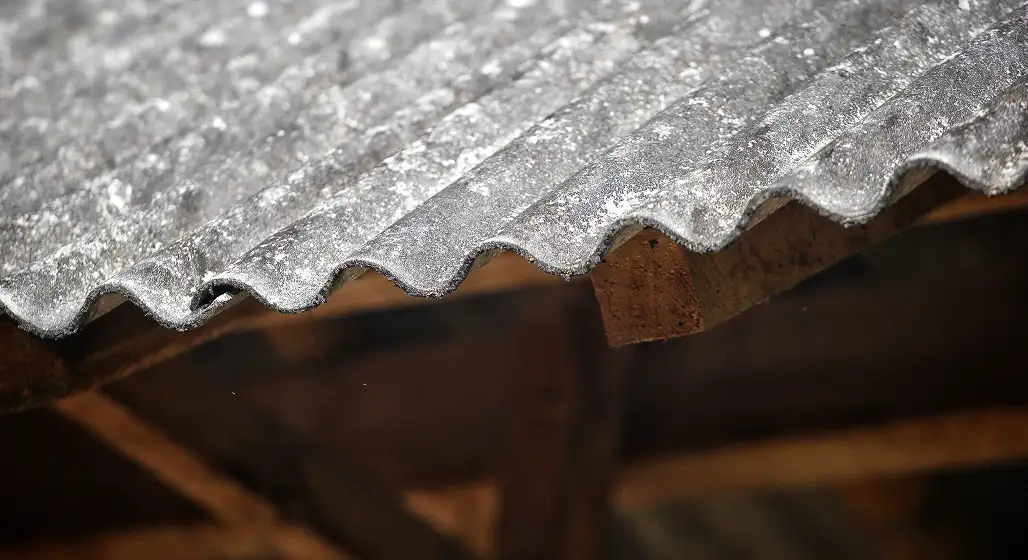
Covered by Home Insurance: What You Need to Know
Home insurance may cover asbestos removal in certain situations, but coverage is often limited and subject to specific conditions. Generally, if asbestos removal is required because of sudden and accidental damage, such as from a fire, storm, or water leak, a home insurance policy might provide coverage for the cleanup and repair costs. However, insurance rarely covers asbestos removal due to normal wear and tear or if asbestos was already present before the policy was in effect.
It is important to be aware of common policy limitations and exclusions related to asbestos removal:
- Pre-existing conditions: Most policies exclude coverage for asbestos that existed before the insurance policy started.
- Gradual damage: Asbestos removal due to long-term deterioration or maintenance is usually not covered.
- Pollution or contamination exclusions: Some policies exclude environmental hazards, including asbestos, unless caused by a covered peril.
- Coverage caps: Even when asbestos removal is covered, there may be limits on the amount the insurer will pay.
- Requirement for proper documentation: Insurers often require detailed evidence of asbestos presence and the cause of damage to approve claims.
Homeowners should carefully review their insurance policy language and speak directly with their insurance provider to understand the specific coverage and any steps needed to file a claim for asbestos removal.
Is Asbestos Removal Covered by Other Insurance?
In addition to homeowners insurance, other types of insurance may provide coverage for asbestos removal depending on the situation. Environmental insurance is often designed to address hazards like asbestos, especially for businesses, landlords, or property owners who may be held responsible for contamination. This type of insurance can cover cleanup costs, legal fees, and damages related to asbestos exposure or removal.
Liability insurance also plays a key role in asbestos-related claims. Contractors who handle asbestos removal typically carry liability insurance to protect against claims arising from improper handling or accidental exposure during their work. Property owners may also have liability coverage that protects them if someone is harmed by asbestos on their property.
Key points about asbestos coverage through other insurance types include:
- Environmental insurance may cover the cost of asbestos remediation and associated liabilities, particularly for commercial properties.
- Liability insurance for contractors helps manage risks and legal claims that arise from asbestos removal work.
- Property owners’ liability coverage may protect against claims if visitors or tenants are exposed to asbestos.
- Insurance policies vary widely so contractors and property owners need to review their coverage carefully.
Understanding the scope of environmental and liability insurance can help ensure that all parties involved in asbestos removal are adequately protected.
Falling Objects and Asbestos: A Special Consideration
Falling objects such as tree branches, construction debris, or parts of a damaged roof can disturb asbestos-containing materials and release harmful fibers into the air. When these materials are impacted or broken, the asbestos becomes friable, increasing the risk of exposure to anyone nearby. This type of accidental damage can create an urgent need for professional asbestos removal to prevent health hazards.
From an insurance perspective, incidents involving falling objects that lead to asbestos disturbance may be covered under certain policies if the damage is sudden and accidental. Homeowners should understand the following insurance implications:
- Home insurance may cover repairs and asbestos removal if falling objects cause structural damage that releases asbestos fibers.
- Documentation is critical for insurance claims, including proof of the falling object event and evidence of asbestos contamination.
- Policies may exclude coverage if the damage is considered preventable or due to neglect.
- Liability insurance might apply if a third party is responsible for the falling object and subsequent asbestos damage.
It is important for homeowners to report such incidents promptly to their insurance provider and work with qualified asbestos removal professionals to address the issue safely and in compliance with insurance requirements.
Steps to Take If You Need Asbestos Removal Coverage
If you need asbestos removal and want to explore insurance coverage, the first step is to notify your insurance company as soon as possible. Filing a claim typically involves providing detailed information about the asbestos discovery, the cause of damage, and any related incidents. It is important to document the situation thoroughly with photos, inspection reports, and professional asbestos testing results to support your claim.
When filing a claim for asbestos removal, keep the following steps in mind:
- Contact your insurer promptly to report the issue and start the claims process.
- Gather all relevant documents, including inspection reports, contractor estimates, and photos of the affected areas.
- Work with licensed asbestos removal professionals to obtain accurate cost estimates and safe removal plans.
- Follow your insurer’s instructions for claim submission and any required inspections.
Before and during the claims process, ask your insurance provider key questions to understand your coverage clearly:
- What types of asbestos removal are covered under my policy?
- Are there any exclusions or limits on asbestos-related claims?
- What documentation and proof do I need to provide?
- How long does the claims process typically take?
- Will the insurer recommend specific contractors or allow me to choose my own?
- What are my options if the claim is denied or only partially covered?
Being proactive and informed can help ensure a smoother claims experience and reduce financial surprises related to asbestos removal.
Understanding insurance coverage for asbestos removal is important because many policies only cover removal in cases of sudden damage and often exclude pre-existing conditions. Since asbestos poses serious health risks, professional removal is essential. Homeowners should review their insurance policies carefully and communicate with their insurer to know what is covered, gather proper documentation, and navigate claims effectively to avoid unexpected costs while ensuring safe asbestos removal. Call California Certified for expert assistance in asbestos removal and guidance through the insurance process.
Why Choose Certified Professionals for Your Asbestos Removal Project?
California Certified has highly trained professionals with decades of experience in safe asbestos removal and remediation. Our licensed team responds quickly, conducts thorough inspections, and uses industry-approved methods to contain and remove asbestos from your property. We work closely with you and your insurance provider to ensure the process is handled efficiently, safely, and with minimal stress. At California Certified, your health, safety, and peace of mind are our top priorities.
Call California Certified as soon as you suspect asbestos in your home or business. Our licensed team can inspect, safely remove asbestos, and assist you in navigating insurance coverage to ensure the process is completed quickly, effectively, and with your safety in mind.

